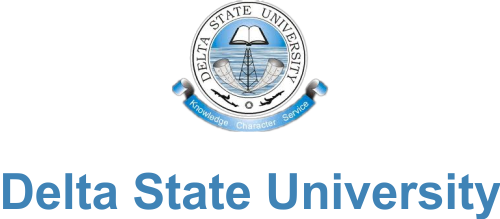Undress AI: The Dark Side of Artificial Intelligence and Why It’s More Than Just a Privacy Concern
Undress AI: The rise of artificial intelligence (AI) has transformed numerous industries, but its advancements have also introduced tools with serious ethical implications. One such controversial innovation is Undress AI, a subset of AI applications that allow users to digitally manipulate photos to simulate nudity. These tools, which have grown in popularity due to their ease of use and realistic output, can be used both for artistic purposes and, more troublingly, in ways that violate privacy and consent.
In this article, we’ll explore the technical aspects of Undress AI, its legitimate uses, the ethical and legal ramifications, and steps to protect yourself from potential misuse of these AI technologies.
What is Undress AI?
Undress AI refers to a set of artificial intelligence tools that remove or alter clothing in images, often simulating nudity. These applications leverage neural networks and machine learning algorithms trained on large datasets of clothed and unclothed images. The most infamous tool in this category is DeepNude, which gained widespread attention in 2019 before being taken down due to concerns about its misuse. Despite the removal of this tool, similar applications continue to emerge, such as Clothoff.io and DeepNudeNow.
These tools typically work by analyzing input photos and generating an altered version of the image where the clothes have been digitally removed. The AI uses pattern recognition and machine learning models to predict what a person might look like without clothes based on visible features such as body shape, posture, and skin tone.
The Evolution of Undress AI and Its Legitimate Uses
While the concept of AI-powered clothing removal has garnered widespread controversy, it also has some legitimate applications in creative industries. For example, in fashion design, AI tools can be used to visualize how clothes fit or drape on a model’s body without the need for physical prototypes. These tools can also aid in creating virtual fitting rooms for e-commerce, allowing customers to “try on” clothes digitally before purchasing.
Artistic and Medical Applications
In some instances, Undress AI is used for non-exploitative purposes in art and digital content creation. Artists and designers may use these tools to explore human anatomy and generate realistic body forms for their projects. Similarly, medical education can benefit from AI tools that help visualize human anatomy, providing detailed visualizations for teaching and surgical planning.
Ethical Concerns: Privacy, Consent, and Misuse
The primary ethical concern with Undress AI revolves around non-consensual image manipulation. When used to undress individuals without their permission, these tools can violate privacy, contribute to online harassment, and be weaponized in revenge porn cases. The increasing availability of these applications poses significant risks, especially to those unaware of how their images might be misused.
Privacy Violations and Consent Issues
One of the biggest challenges with Undress AI is its potential to violate personal privacy. As the internet continues to host an ever-growing number of publicly shared photos, individuals’ images can easily be uploaded to AI tools without their knowledge or consent, resulting in damaging and harmful consequences.
The Psychological Impact
Victims of non-consensual AI manipulation may suffer from anxiety, depression, and reputational harm. These tools, which dehumanize individuals by reducing them to manipulated images, can have lasting psychological effects, especially when shared on social media platforms.
Legal Ramifications of Undress AI
Despite the obvious ethical concerns, the legality of AI tools like Undress AI varies significantly across different regions. Some countries have laws that explicitly address deepfake pornography and non-consensual intimate imagery, but many regions still lack the specific legal frameworks needed to combat the misuse of these technologies.
Laws Around the World
– United States: Some states have introduced laws targeting deepfake technology and revenge porn, but federal legislation addressing Undress AI specifically is still lacking.
– European Union: The EU’s General Data Protection Regulation (GDPR) provides strong protections for personal data, but enforcing privacy violations related to AI image manipulation is challenging.
– Asia: Several countries in Asia, including South Korea and Japan, have strict laws against non-consensual pornography, but AI tools that simulate nudity fall into a grey area.
Legal scholars emphasize the need for updating regulations to account for rapid AI advancements, ensuring that victims have avenues for legal recourse.
Preventing and Reporting AI Misuse
To protect oneself from the misuse of AI tools like Undress AI, individuals must be vigilant about their digital footprint. Here are a few steps you can take to safeguard your privacy:
- Control Your Online Presence: Be cautious of the images you share publicly and consider using privacy settings on social media to limit visibility.
- Digital Rights Management: Use digital rights management tools that can help detect when your images have been altered or shared without permission.
- Reporting Tools: If you believe your image has been manipulated, report it to the platform hosting the content. Many social media platforms have policies against non-consensual intimate images.
Organizations and AI developers are also working to build AI detection tools that can identify when an image has been digitally altered, helping to curb the spread of manipulated content.
Conclusion: The Dual-Edged Sword of AI
Undress AI represents a powerful yet controversial use of artificial intelligence. While it offers legitimate applications in fashion, art, and medical education, its potential for misuse cannot be ignored. The technology blurs the line between innovation and invasion, raising important questions about consent, privacy, and the ethical boundaries of AI development.
As AI continues to evolve, so too must the laws and ethical guidelines that govern its use. By promoting responsible AI development and educating users about the potential dangers, society can harness the benefits of AI while minimizing its potential for harm. However, individuals must remain vigilant about protecting their digital privacy in an age where even a simple photo can be manipulated with ease.






